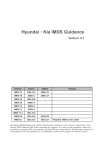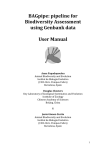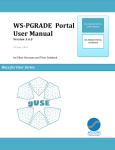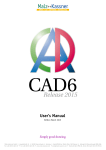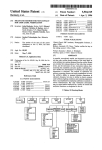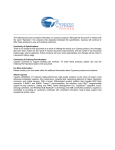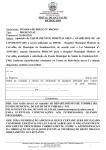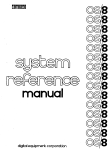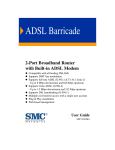Download MetAmp: a tool for Meta-Amplicon analysis User Manual Ilya Y
Transcript
November 12, 2014 MetAmp: a tool for Meta-Amplicon analysis User Manual Ilya Y. Zhbannikov1 , Janet E. Williams1 , James A. Foster1,2,3 3 Institute for Bioinformatics and Evolutionary Studies, University of Idaho, Moscow, ID 83844-3051, 2 Department of Biological Sciences, University of Idaho, Moscow, ID 83844-3051, 1 Department of Bioinformatics and Computational Biology, University of Idaho, Moscow, ID 83844-3051, Keywords: Bioinfomatics, 16S genes, microbial studies, meta-analysis, data mining Correspondence: Ilya Y. Zhbannikov Department of Bioinformatics and Computational Biology University of Idaho Moscow, ID 83844-30521 Email: [email protected], [email protected] 1 Description MetAmp tool was developed to analyze microbial amplicon data by combining several marker regions from 16S rRNA gene. Such marker regions serve as unique identifications for species. There are nine variable regions in total in bacterial 16S rRNA gene and even more marker regions, because marker region can contain itself several variable regions. MetAmp was developed by Ilya Y. Zhbannikov ([email protected], [email protected]), James A. Foster ([email protected]) and Janet Williams ([email protected]). 2 Installation MetAmp is easy to install. However, you must have R (www.r-project.org), Python 2.7.6 (at least, because older versions may not support some features) (www.python.org), GCC (https://gcc.gnu.org/) and make sure that you have a stable Internet connection.. 1. Download or clone MetAmp from our GitHub repository (http://github.com/ izhbannikov/MetAmp), for example: git clone http://github.com/izhbannikov/MetAmp 2. In Terminal: cd to the MetAmp directory and execute Makefile: $make. In some cases you have to be a system administrator, so you need to compile MetAmp with the following command: $sudo make. First, the installation script will check for required tools: R, Python and gcc. Then it builds and installs required packages and data for evaluation. You can also run make install to avoid checking stage. 3. Installation summary: $git clone http://github.com/izhbannikov/MetAmp 1 $cd MetAmp/ $make 3 Quick start You have to provide reference libraries, your amplicon data and output directory where all analysis results will be strored: One marker region: python metamp.py -r data/gold21/gold21.fasta \ -r1 data/gold21/gold21_V13V31.fasta \ -l1 data/even/SRR072220_V13V31_relabeled.fastq \ -o test Here: • metamp.py - program name. • -r data/gold21/gold21.fasta - passing the reference file, that contains whole 16S sequences, in forward and reverse complement. • -r1 data/gold/gold21 V13V31.fasta - passing the reference file that contains marker (region V1-3) sequences extracted from gold21.fasta (whole 16S), in forward and reverse complement. • -l1 data/even/SRR072220 V13V31 relabeled.fastq - amplicon emprirical reads. ”relabeled” means that a barcode sequences were attached to each read label. • -o test - output directory with all analysis results. Three variable regions: 2 python metamp.py -r data/gold21/gold21.fasta \ -r1 data/gold21/gold21_V13V31.fasta \ -l1 data/even/SRR072220_V13V31_relabeled.fastq \ -r2 data/gold21/gold21_V35V53.fasta \ -l2 data/even/SRR072220_V35V53_relabeled.fastq \ -r3 data/gold21/gold21_V69V96.fasta \ -l3 data/even/SRR072239_V69V96_relabeled.fastq \ -o test In this case: • -r2 data/gold/gold21 V35V53.fasta - a reference file that contains marker (region V3-5) sequences extracted from gold21.fasta (whole 16S), in forward and reverse complement. • -l2 data/even/SRR072220 V35V53 relabeled.fastq - amplicon empirical reads. • -r3 data/gold/gold21 V69V96.fasta - a reference file that contains marker (region V3-5) sequences extracted from gold21.fasta (whole 16S), in forward and reverse complement. • -l3 data/even/SRR072239 V69V96 relabeled.fastq - amplicon empirical reads. To get help from the program, you can use python metamp.py -h: $python metamp.py -h usage: metamp.py -o [--output] -r [--ref] <reference 16S seqs> \ 3 -r1 [--ref1] <reference marker seqs> \ -l1 [--lib1] <your amplicon library> \ [options] optional arguments: -h, --help show this help message and exit -o OUTPUT, --output OUTPUT Output directory. -r REF16S, --ref REF16S Output file with keywords. -r1 REF1, --ref1 REF1 Reference marker sequences for marker type #1 -r2 REF2, --ref2 REF2 Reference marker sequences for marker type #2 -r3 REF3, --ref3 REF3 Reference marker sequences for marker type #3 -r4 REF4, --ref4 REF4 Reference marker sequences for marker type #4 -r5 REF5, --ref5 REF5 Reference marker sequences for marker type #5 -r6 REF6, --ref6 REF6 Reference marker sequences for marker type #6 -r7 REF7, --ref7 REF7 Reference marker sequences for marker type #7 -r8 REF8, --ref8 REF8 4 Reference marker sequences for marker type #8 -r9 REF9, --ref9 REF9 Reference marker sequences for marker type #9 -l1 LIB1, --lib1 LIB1 Amplicon sequences for marker #1 -l2 LIB2, --lib2 LIB2 Amplicon sequences for marker #2 -l3 LIB3, --lib3 LIB3 Amplicon sequences for marker #3 -l4 LIB4, --lib4 LIB4 Amplicon sequences for marker #4 -l5 LIB5, --lib5 LIB5 Amplicon sequences for marker #5 -l6 LIB6, --lib6 LIB6 Amplicon sequences for marker #6 -l7 LIB7, --lib7 LIB7 Amplicon sequences for marker #7 -l8 LIB8, --lib8 LIB8 Amplicon sequences for marker #8 -l9 LIB9, --lib9 LIB9 Amplicon sequences for marker #9 -qual QUAL, --qual QUAL Quality score threshold (default=15) -minlen MINLEN, --minlen MINLEN Minimum read length (default=250) 5 3.1 Test data The following test data sets were used: • data/even/ • data/staggered/ The even and staggered are the Human mock community pyrosequence data (SRX021555), even and staggered community, 21 microbial species and one eucariotic species. 3.2 Results 3.2.1 Clustering results By default it is clusters.clstr but the name can be changed (by changing clust filename parameter in config.R file). This file has the uc format and described at http://drive5.com/usearch/manual/ucout.html. Below we provide an example and copy the format description from www.drive5.com: H H H H H 0 1 1 5 22 250 250 250 250 250 99.6 100.0 100.0 100.0 98.8 + + + + + 0 0 0 0 0 0 0 0 0 0 250M 250M 250M 250M 250M read11;barcodelabel=TCAG; read6;barcodelabel=TCAG; read12;barcodelabel=TCAG; read7;barcodelabel=TCAG; read22;barcodelabel=TCAG; OTU_1 OTU_2 OTU_2 OTU_4 OTU_20 Description of uc format is directly taked from http://drive5.com/usearch/ manual/ucout.html Field Description 1 Record type S, H, C or N (see table below). 2 Cluster number (0-based). 3 Sequence length (S, N and H) or cluster size (C). 4 For H records, percent identity with target. 5 For H records, the strand: + or - for nucleotides, . for proteins. 6 Not used 7 Not used 8 Compressed alignment or the symbol ’=’ (equals sign). 9 Label of query sequence (always present). 10 Label of target sequence (H records only). 6 Record H S C N 3.2.2 Description Hit. Represents a query-target alignment Centroid (clustering only) Cluster record (clustering only) No hit OTU table An OTU table, where rows are OTUs and colums are barcodes (by default - otu table.txt). Example: OTUId TCAG OTU_8 123 OTU_9 158 OTU_2 341 ... 3.2.3 .... Coordinates A text file that contain coordinates for each point, including reference points (by default coordinates.crd) 3.2.4 Log A text file containing all messages during the analysis process (by default - log.txt) 4 MetAmp workflow In the following sections we present key stages of our meta-amplicon analysis pipeline. 4.1 Input data Input data can be any of the following NGS libraries: Roche 454, Ion Torrent, Illumina. 7 Roche 454 and Ion Torrent provide single-end sequences in special binary Sequence Flowgram Format (SFF). Before using SFF files you have to convert them into FASTQ format. Illumina paired-end reads should be merged into longer single-end sequences. Important! - Before analysis, you may need to perform re-labeling of your read headers: a read header should contain barcodelabel (see more at www.drive5.com), for example: @read1;barcodelabel=TCAG; GATGAACGCTGGCGGCGTGCCTAATACATGCAAGT...AT + IIIAAAIIIIIIIIIIIIIIIHHHIAAAAAAAAAA...II If you use Illumina sequence data, you also have to merge overlapping paired-end reads. Later I will provide the scripts that can do these things above, but for now you can simply use scripts provided at www.drive5.com. 4.2 Data denoising Data denoising is necessary for downstream analysis because it removes the majority of ’foreign’ nucleotides, such as barcodes and primers, and low-quality regions. We suggest you to use SeqyClean tool for this operation, since it is the most comprehensive tool for sequence denoising. You can download SeqyClean here: https://bitbucket.org/izhbannikov/seqyclean. Using SeqyClean is simple and straightforward. Nevertheless, we provided a special script that does all the data de-noising. 4.3 Analysis workflow 1. Building a reference topology of microbial populations,where pairwise distances are computed from applying pairwise alignment of complete reference 16S gene sequences from 8 RDP database, see Figure 1(a), top plane. We use the percent sequence identity in order to compute the distances between sequences. 2. Computing a guide ”amplicon” topology for each reference 16S sequence. To do this, we extract marker regions (for example V1- V3 and V6-V9) from reference complete 16S sequences (”reference points”) and place them on to the plane with the same methodology that was used for building the reference topology of complete 16S (see Figure 1(a), bottom plane, hollow green circles). 3. add empirical amplicon sequences (in fact, amplicon consensus sequences), obtained through amplicon sequencing of microbial data (Figure 1b, bottom, filled blue circles). This topology is the same empirical topology as if the empirical data would be clustered with existing methods 4. Normalized empirical topologies are formed foreach marker through mapping of each empirical point back to the reference 16S sequence topology. Mapping between the reference topology and guide ”amplicon” topology is achieved with affine transformation. Guide sequences are so match with the corresponding reference 16S sequences, from where they were obtained from (see Figure 1a, top, solid green circles), and, in turn, carry the empirical amplicon sequences (or consensus amplicon sequences) back to the 16S plane. 5. Repeating stages 2-4 for each variable region. 6. Clustering and building OTUs. 7. Final statistics. 9 (a) (b) (c) Figure 1: Ilustration of “meta-amplicon” analysis algorithm. (a) Computing reference (top plane) and guide (bottom plane) topologies. Pairwise sequence dissimilarity is used to compute distances between reference sequences. The same approach is used for guide sequences, originated from corresponding whole 16S gene sequences. Reference and guide points are then placed on to the planes with multidimensional scaling. (b) The empirical amplicon sequences (hollow blue circles) are places on to the bottom plane along with the guide circles (hollow green) circles and with the same metric. Such guide sequences are then mapped back to the reference 16S plane, carrying empirical sequences (solid blue circles). (c) Then this is repeated for each of marker (variable) region. 10 4.4 Output files • Clustering results (*.clstr) - by default it is clusters.clstr but the name can be changed (by editing clust filename parameter in config.R file) • An OTU table, where rows are OTUs and colums are barcodes (by default otu table.txt). • A text file that contain coordinates for each point, including reference points (by default coordinates.crd) • A text file containing all messages during the analysis process (by default - log.txt) 5 Provided data We provided some data that can be used in your projects. For evaluation purposes we provided small data set. Description of provided data is given below: • gold folder contains ’Gold Dataset’ (gold.fa) containing the ChimeraSlayer reference database in the Broad Microbiome Utilities (http://microbiomeutil.sourceforge.net/), version microbiomeutil-r20110519. This contains more than 5000 sequences in both orientations (forward and reverse-complemented.). • In addition, we supply a dataset that contains 1500 microbial 16S sequences extracted from the ’Gold Dataset’. • Evaluation data set contains a smal set of reference sequences (21 sequences) and empirical amplicon sequences (data/even.zip and data/staggered.zip). Amplicon sequences contain sequence data from Human Mock Community. More information provided here: http://www.hmpdacc.org/HMMC/ 11 Evaluation: Name even staggered gold21.fasta gold21 V13V31.fasta gold21 V35V53.fasta gold21 V69V96.fasta Description Even community: SRR053818, SRR072220, SRR072239 Staggered community: SRR072221, SRR072223, SRR072237 contains 21 reference 16S sequences contains 21 reference marker sequences (1-3 regions) contains 21 reference marker sequences (3-5 regions) contains 21 reference marker sequences (6-9 regions) The even and staggered are the Human mock communuty (HMP) pyrosequence data (SRX021555: http://www.ncbi.nlm.nih.gov/sra?term=SRX021555). Detailed description of these datasets (and sequencing protocols) is under the following link: http:// www.hmpdacc.org/HMMC/ 5.0.1 Directory map and descriptions of folders MetAmp data gold21 gold1500 gold5000 src Packages blastparser bin python scripts data - contains reference sequences, evaluation data and other data that can potentially be useful data/gold - contains ’gold’ reference sequences from Broad Institute. data/gold1500 - contains 1500 ’gold’ reference sequences extracted from the previous ’gold’ dataset. data/gold21 - contains 21 ’gold’ reference sequences extracted from the previous ’gold’ dataset. This dataset was used to evaluate MetAmp src - contains source files. Packages - contains installation files. 12 Packages/blastparser - a parser for blastn files. bin - binary files (alignment and clustering programs). python scripts - Python scripts from www.drive5.com. 6 Parameters You can adjust parameters in file config.R. It contains parameters such as path to temporary directory, names of the output files, etc. Below we describe those parameters in details. 6.1 config.R usearch and usearch7 - paths to alignment tool (we use USEARCH, see www.drive5.com) R LIBS - Path to installed BLASTParser package (BLASTParser parses output files from USEARCH and creates distance matrices) clust filename - Filename of file with final clusters otu table filename - Filename of final OTU table coord filename - Filename of output file with NMDS coordinates of each reference and empirical point (see ’Analysis workflow’) chime ref - Chimeric reference database tmp dir - A directory that contains temporary files keep tmp files - Keep or not temporary files 7 Acknowledgements This work was made possible by NIH Grants P20GM16448 and P20GM16448, and NSF Grant DBI0939454. 13














